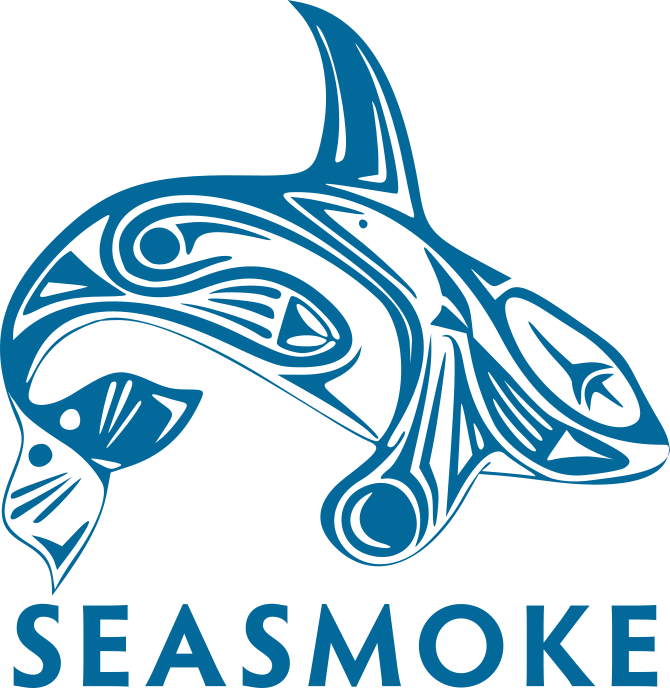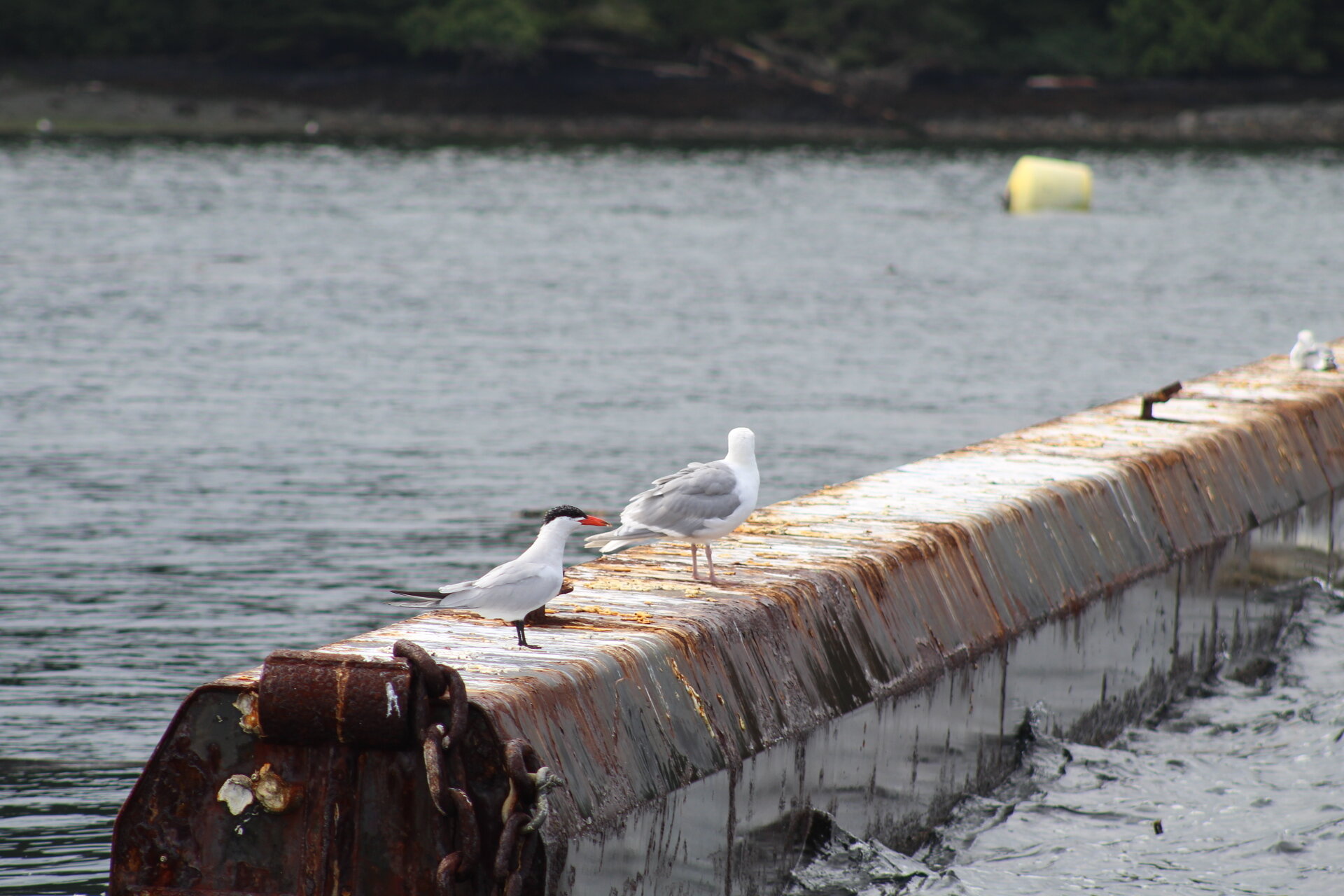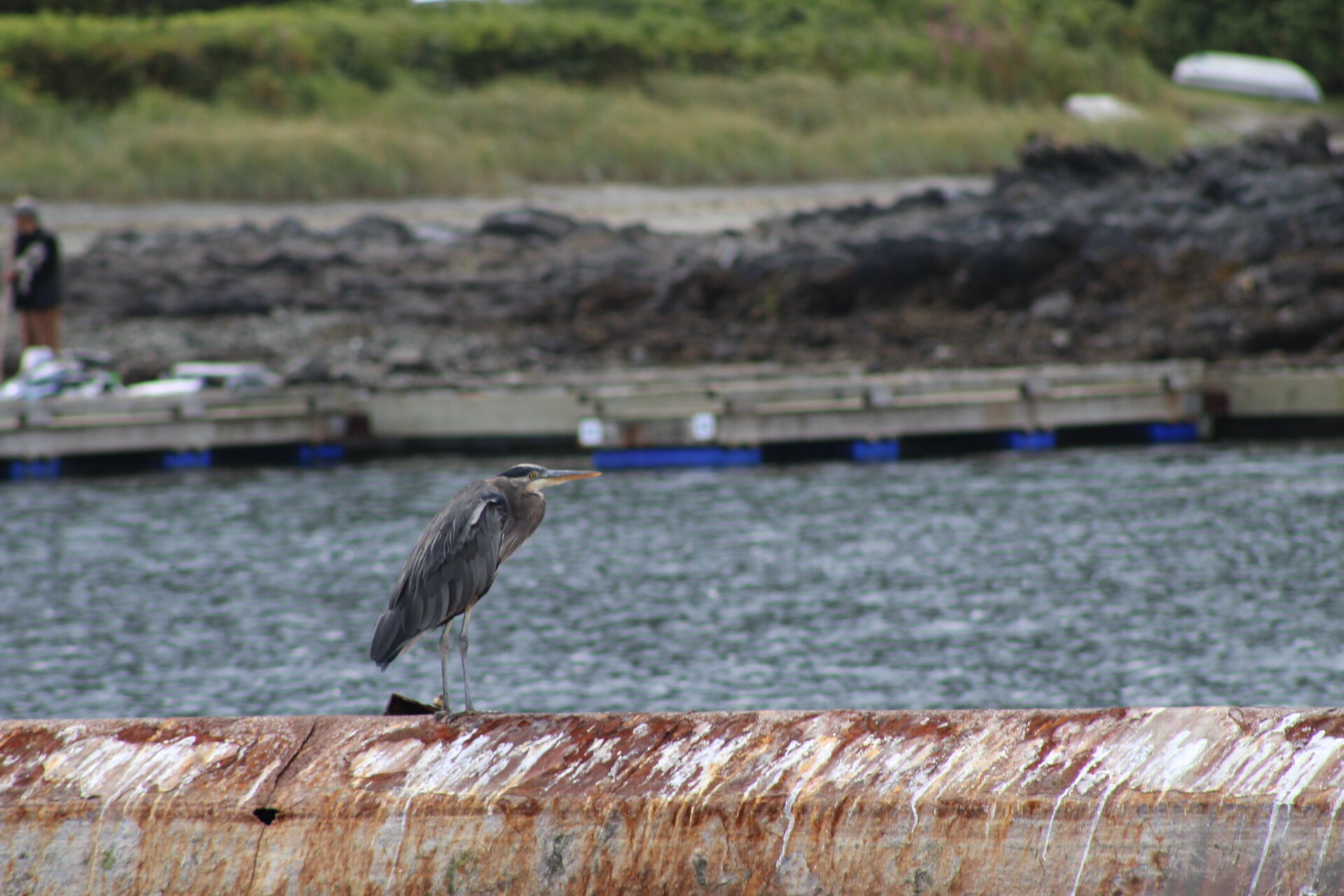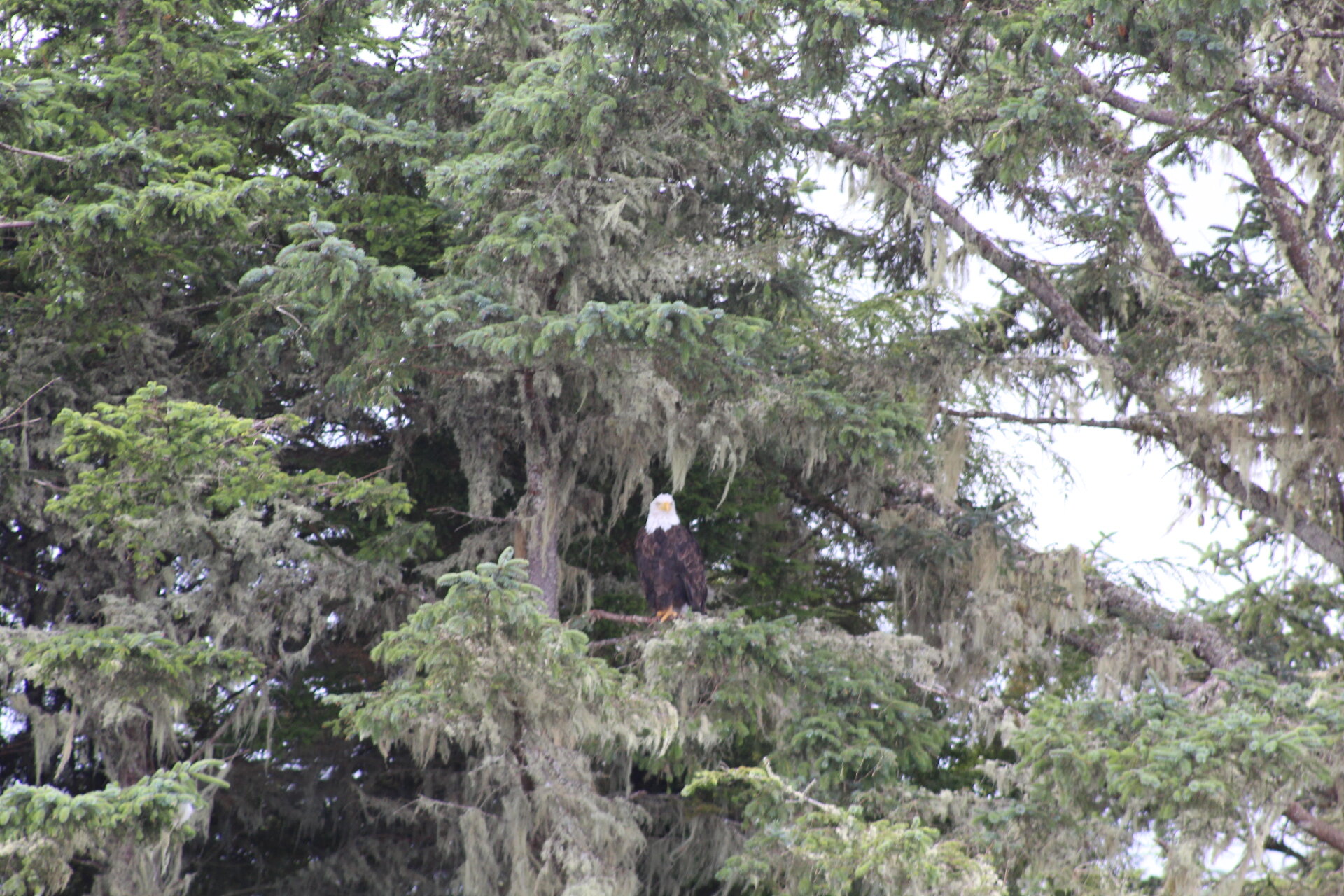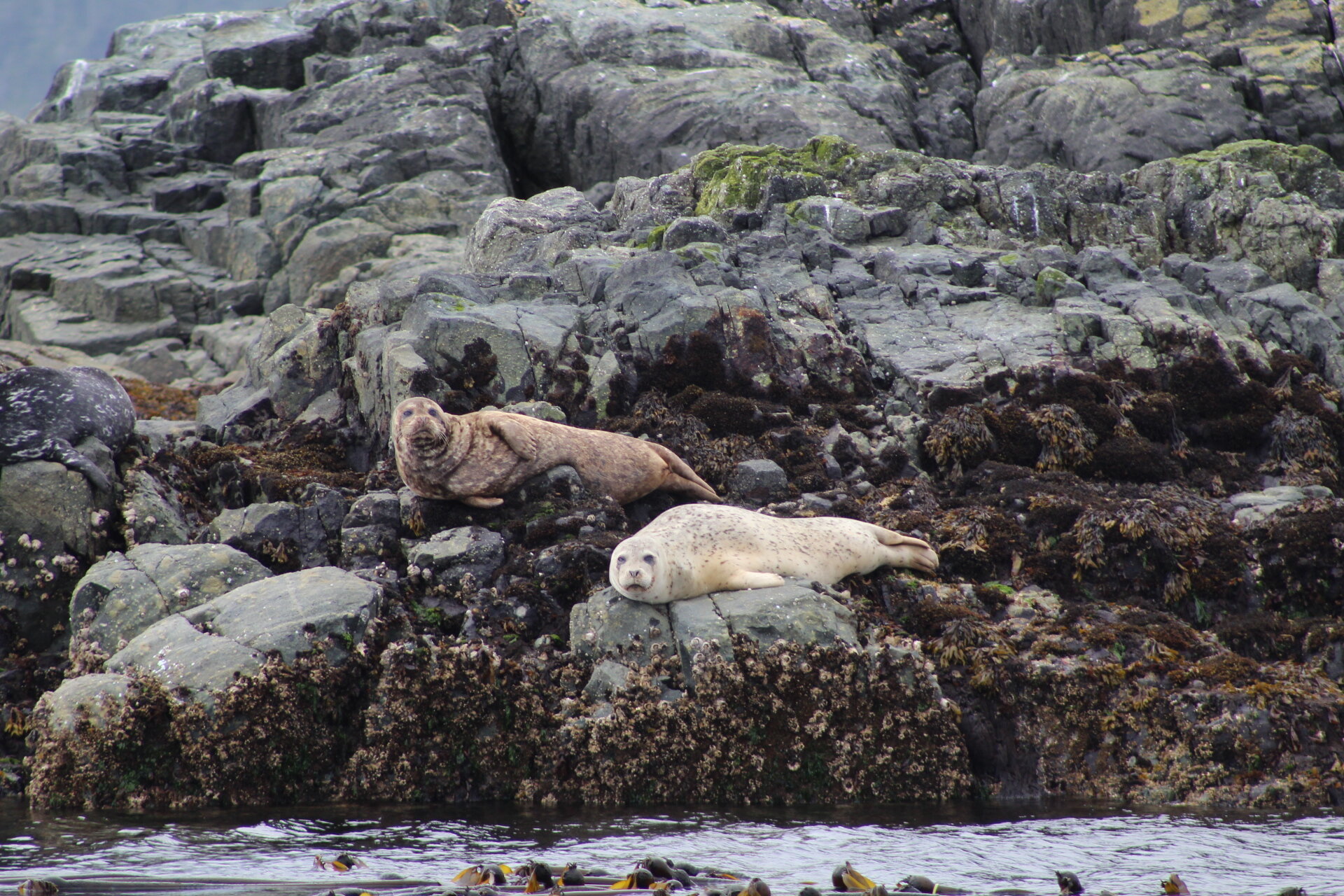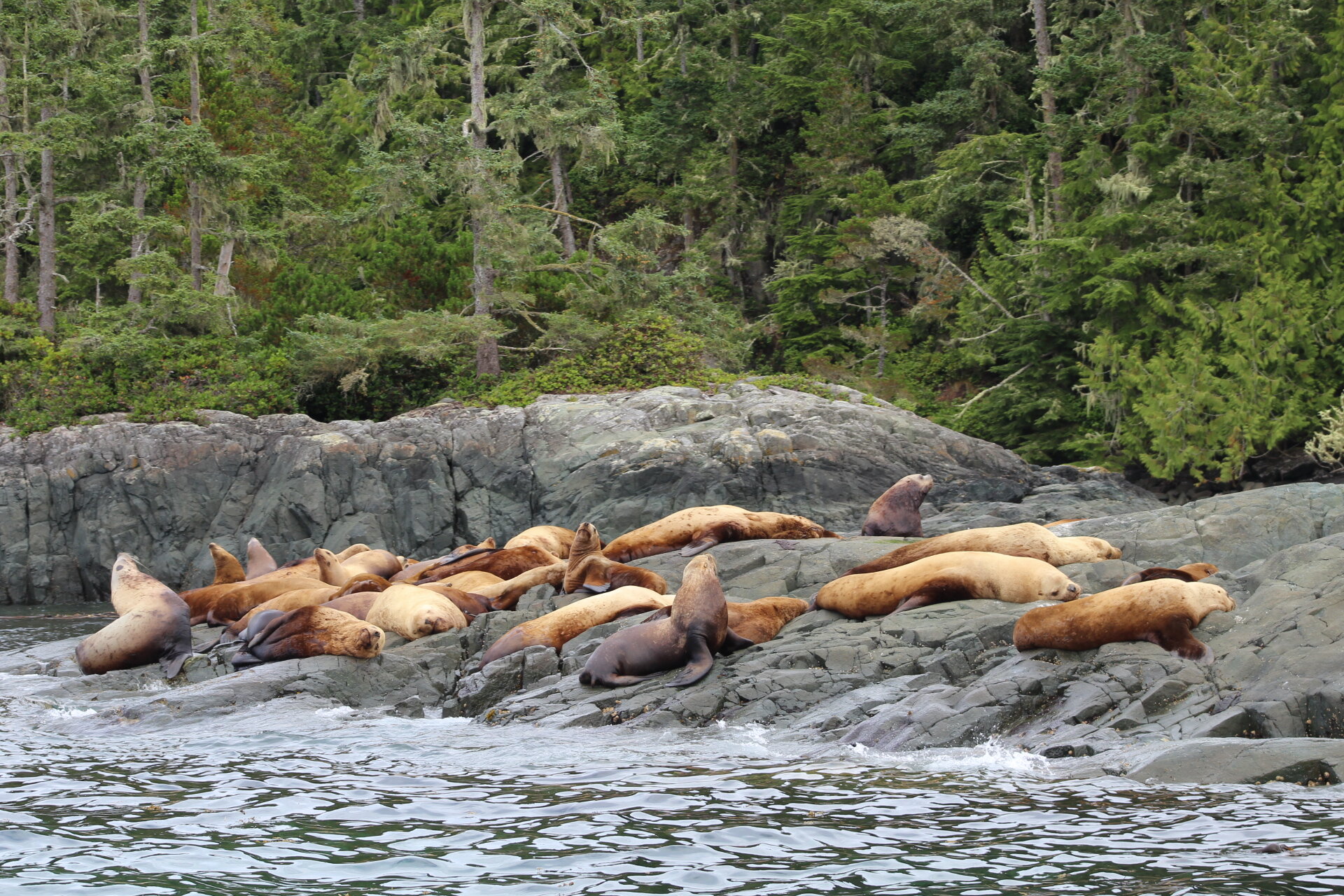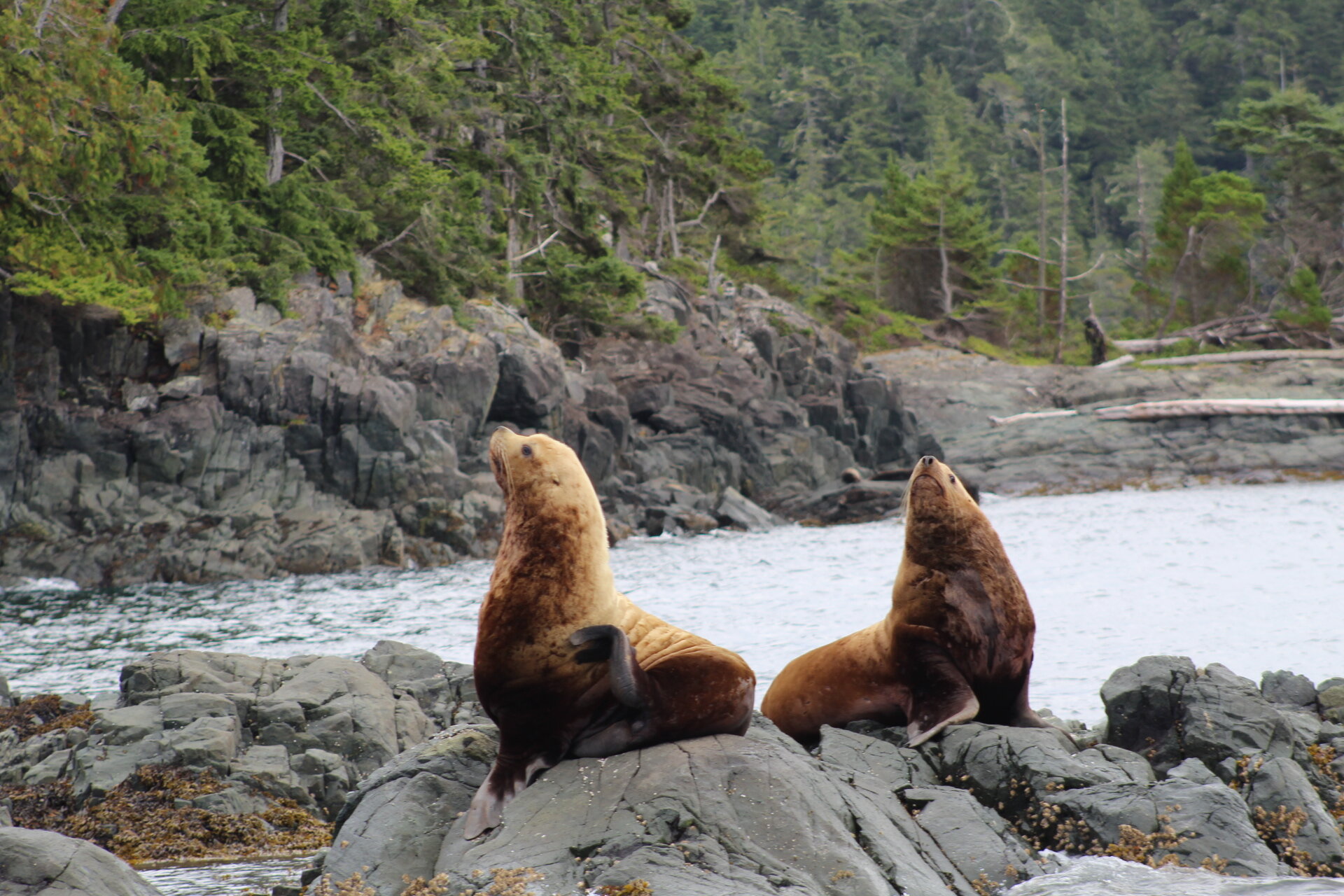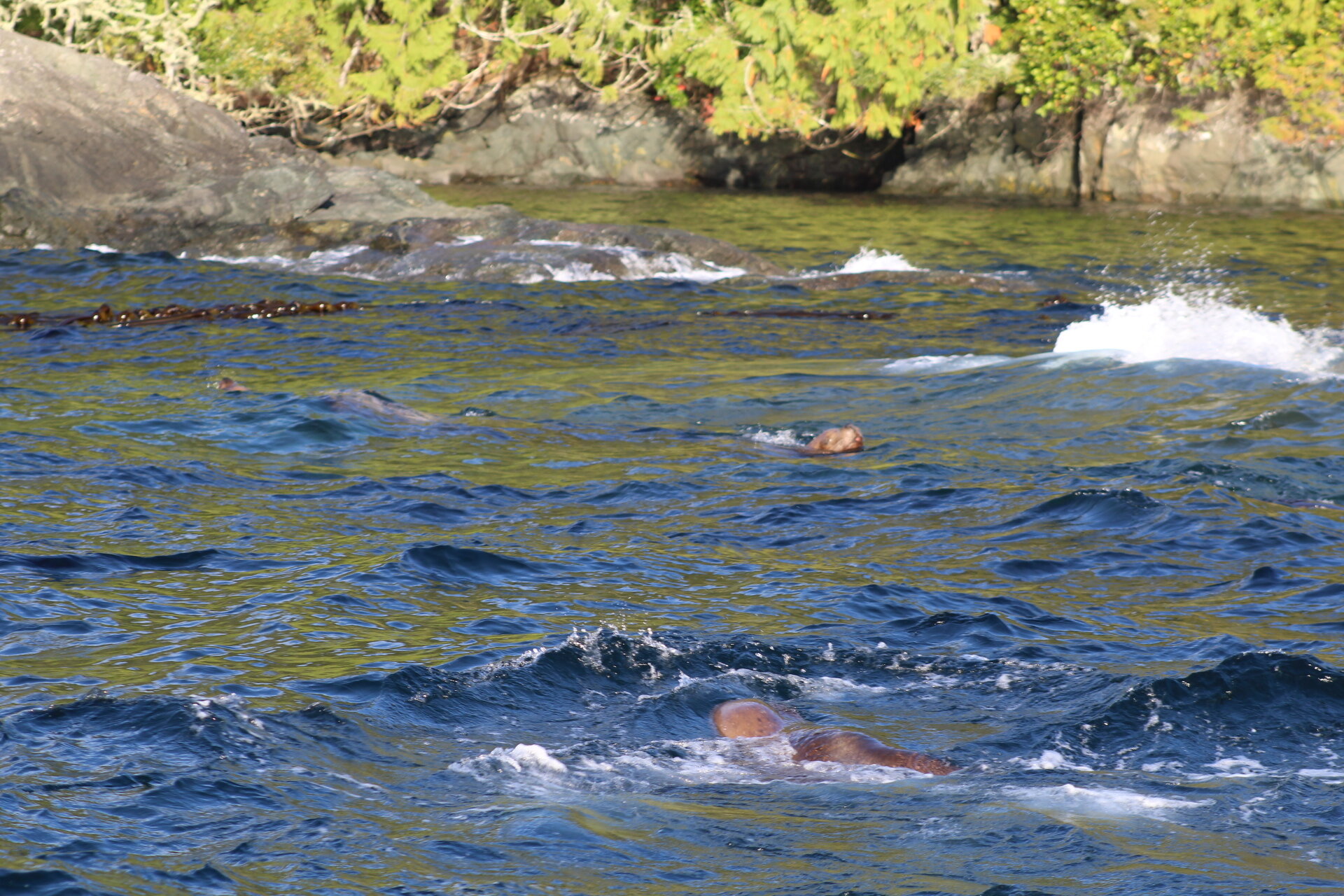Sea Lions on the Rocks and Orca in the Passages!
The MV Seasmoke set out on a fine afternoon with sunny skies dotted by puffy clouds and a northwest breeze, that picked up later in the day for the evening tour. Both afternoon and evening guests were out on the water in time to intercept pods of Orca that were swimming in Weynton Passage in the afternoon and making their way into the picturesque Stephanson group of islets. Identified as the ‘I’ and ‘A’ pods, there were about 25 of these spectacular ‘black and whites’ altogether. Later in the day, our evening guests saw even larger numbers - up to 50 Orca identified as I4s, I27s, I65s, A23s, A25s, A42s, A50s, A54s and A94s. Wow! A super pod! This is a very good sign and tells us there is lots of food for them - mainly the Chinook salmon they love to dine on.
The Orca were kept company by the magnificent Humpback - a true whale, unlike the Orca which are in reality a very large dolphin, but who received their notorious name ‘Killer Whale’ from those who had observed transient Orca killing and feeding on other sea mammals such as seals. Our Northern Residents are pescatareans, as are the Humpback who dive down looking for little krill and fish. In fact, Humpbacks are unable to swallow anything larger. Seasmoke passengers love to watch the Humpback emit their large ‘blow’, make their shallow dives, then curve their great backs for that final deep dive when the wide and beautiful tail comes up.
We are seeing larger numbers of Stellar sea lions who generally take up residence in our area around this time of year on their usual rocks and in the pretty Plumper Islands. The smaller Harbour seals are seen in various places - their dark and sleek heads are often observed swimming near beds of kelp, and they, like the sea lions, like to rest on rocky islets.
For the birders in our crowd, there were plenty of waterfowl in Blackfish Sound and all over Weynton Passage and particular excitement over seeing the Sooty Shearwater that have been observed feeding in this region. The Great Gray heron and our friend the Bald eagle were also seen in their natural habitat. Altogether, guests commented on having a wonderful trip!
